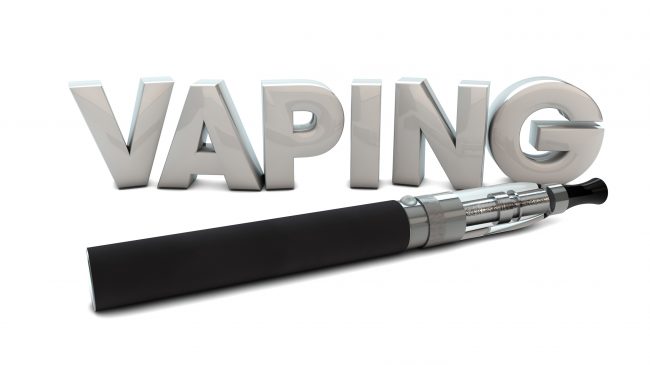Several news reports suggest President Donald Trump may not push ahead with the full-scale prohibition of e-cigarette flavors he was previously close to implementing. The Washington Post reports:
One last thing was needed: Trump’s sign-off. But on Nov. 4, the night before a planned morning news conference, the president balked. Briefed on a flight to a Lexington, Ky., campaign rally, he refused to sign the one-page “decision memo,” saying he didn’t want to move forward with a ban he had once backed, primarily at his wife’s and daughter’s urging, because he feared it would lead to job losses, said a Trump adviser who spoke on the condition of anonymity to reveal internal deliberations.
The New York Times added that President Trump “is concerned about his chances in 2020, and allies working for the vaping industry have told Mr. Trump of battleground state polling of his own voters that showed the issue costing him support.”
Even if President Trump is simply acting out of political self-interest and concerns about losing the support of some of his base supporters, he is making the correct policy and public health decision. He’s also right to be concerned about the economic impacts a flavor ban or vaping ban would have.
Non-tobacco flavors comprise the vast majority of the e-cigarette market, and a nationwide flavor ban could shut down 15,000-to-19,000 businesses and potentially put more than 150,000 people out of work.
In addition to those negative economic impacts, Trump’s pollster, contracted by the Vapor Technology Association (VTA), found vapers in swing states said they’d be extremely unlikely to vote for Trump in 2020 if he supported a vaping ban.
The VTA polled 4,600 vapers and found four in five said they were likely to decide their vote based solely on a candidate’s position on e-cigarettes, with nearly all of them expecting to vote in the 2020 general election. Vapers split disproportionately for Trump in 2016, and his 2020 campaign was concerned changes in their support and turnout could impact every battleground state.
Within the administration, Health and Human Services (HHS) Secretary Alex Azar has been one of the chief advocates for a ban, claiming e-cigarette flavors helped spark a public health crisis and that prohibition would be the best response.
However, abandoning e-cigarette prohibition isn’t just good politics, it’s also good public health policy. Modeling conducted by the Georgetown University Medical Center estimates that if every smoker in America switched to e-cigarettes there could be up to 6.6 million fewer premature deaths in the next 10 years.
Additionally, a randomized controlled trial published in the New England Journal of Medicine (NEJM) found e-cigarettes to be almost twice as effective as traditional nicotine replacement therapies (NRT) at helping smokers quit.
It’s not just that e-cigarettes are safer than combustible cigarettes or that they’re more effective than NRT at helping people quit, it’s the variety of devices and flavors that makes vaping such a success.
A 2018 study in Addiction Behaviors concluded that a higher frequency of e-cigarette use was associated with lower combustible cigarette consumption and flavoring was associated with a lesser quantity of cigarettes smoked.
Using data from the Population Assessment of Tobacco and Health (PATH), a study published in the Substance Use and Misuse medical journal found adult smokers (aged 18–34) at wave 1 (2013/14) who were using one non-tobacco/menthol flavor or multiple non-tobacco/menthol e-cigarette flavors at wave 2 (2014/15) were 2.5 and 3 times more likely to have quit or reduced smoking in the past year, respectively, compared to non-e-cigarette users.
The consequences of banning flavors are as obvious as they are tragic. Analyzing the potential effects of different tobacco flavor bans researchers at the Yale School of Public Health concluded that banning e-cigarette flavors would result in more smoking.
Bans on flavored e-cigarettes are often portrayed as a solution to the problem of youth vaping, which has increased substantially. But it should be noted that in the year 2018-19, youth cigarette smoking fell 28 percent, the largest single-year decline ever recorded.
According to the National Youth Tobacco Survey (NYTS), the most popular product used by youth is Juul and the most popular flavor is mint. This most recent change in flavor preference among many youths from fruit to mint is associated with Juul’s decision to remove their fruit and sweet flavors from the convenience stores in November 2018.
In response to this more recent data, Juul announced it would also be halting sales of mint. As a result, Juul implemented a de facto flavor ban on the products that had been most used by youth— with Juul having discontinued its production of all fruit, sweet and mint flavors.
A flavor ban on all systems would mean the only e-cigarettes left on the market are in tobacco flavors sold by tobacco companies.
With as many as 19 million vapers in the U.S., however, the demand for these products would not be eliminated after prohibition. Many currently legal suppliers will continue to produce e-liquids to sell on the black market, with no industry standards or oversight.
Thankfully, prohibition is not needed to reduce youth vaping. A recent survey of 13–to-17–year-olds shows 80 percent of those who reported using a Juul in the past month obtained the device from at least one social source (e.g. someone bought it for me, someone offered it to me). Meanwhile, 20 percent of teens using Juul said they bought the product themselves, with the most commonplace of purchase being ‘a gas station or convenience store.’
Thus, a potential targeted policy solution to reduce youth vaping would be to examine social sourcing of e-cigarettes, particularly at convenience stores.
It’s good that the Trump administration, at least for now, has reconsidered clamping down on legal vaping and that adults will continue to have access to life-saving products that reduce cigarette smoking. Hopefully, the state and local governments considering their own vaping bans will re-examine the public health benefits of e-cigarettes as well.

